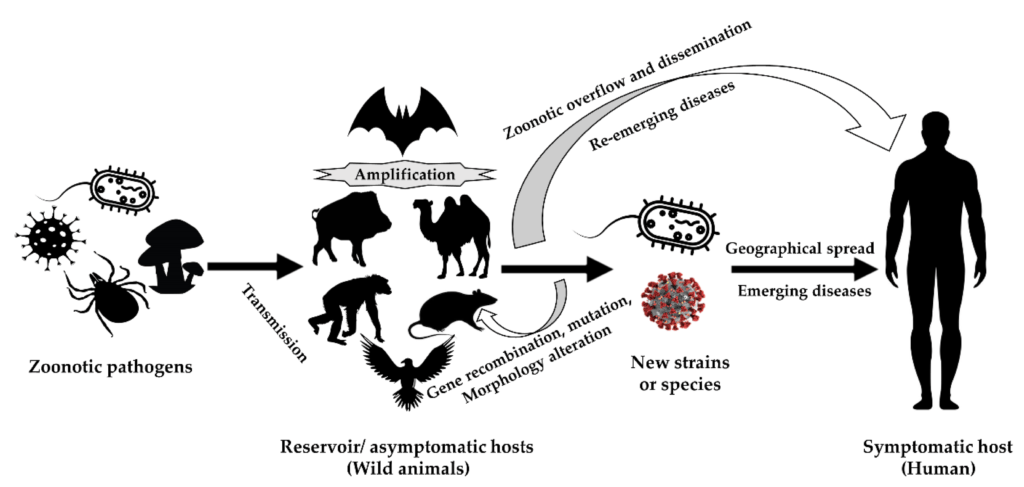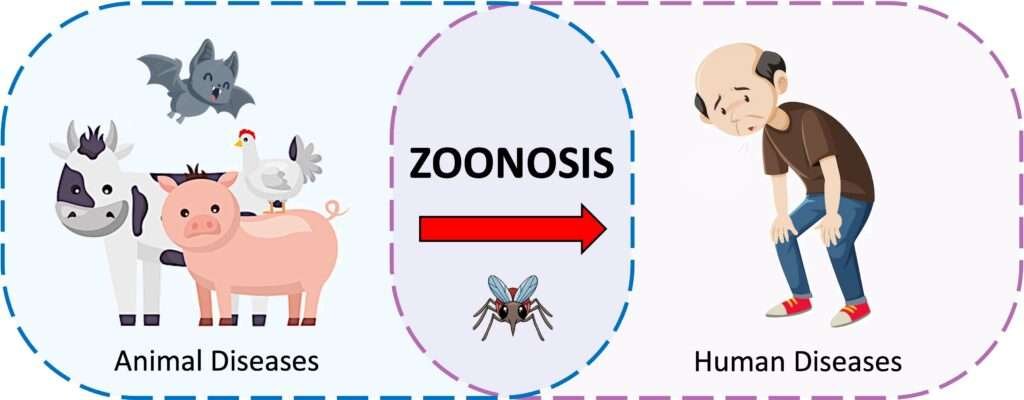Zoonotic diseases, or zoonoses, are infections that can be transmitted from animals to humans. These diseases can spread through direct contact with animals, contaminated food or water, or insect vectors like mosquitoes and ticks. As human-animal interactions increase, understanding and preventing zoonotic diseases is crucial for both public health and animal welfare. Veterinary doctors, researchers, and public health officials work together to monitor and control these infections, reducing the risk of outbreaks and protecting global health.
Understanding Zoonotic Diseases
Zoonotic diseases can be caused by bacteria, viruses, fungi, or parasites that exist naturally in animals but can infect humans under certain conditions. Some infections result in mild symptoms, while others can cause severe illness or even death. The transmission of these diseases often occurs through close contact with infected animals, consuming contaminated food products, or exposure to animal waste.
Common Zoonotic Diseases and Their Impact
Several zoonotic diseases have had significant impacts on human health worldwide. Some of the most notable include:
- Rabies: A deadly viral disease transmitted through the bite or saliva of an infected animal, usually dogs, bats, or wild carnivores. Rabies affects the nervous system and, once symptoms appear, is almost always fatal. Vaccination is the only effective way to prevent infection.
- Avian Influenza (Bird Flu): A viral infection found in birds that can occasionally infect humans through direct contact with infected poultry. Severe strains, such as H5N1 and H7N9, can cause respiratory issues and even lead to pandemics.
- Brucellosis: A bacterial disease affecting livestock like cattle, sheep, and goats. Humans can contract it by consuming unpasteurized dairy products or handling infected animals, leading to flu-like symptoms and long-term health complications.
- Leptospirosis: A bacterial infection transmitted through water contaminated by the urine of infected animals. It can cause fever, kidney damage, liver failure, and even death in severe cases.
- Toxoplasmosis: A parasitic disease caused by Toxoplasma gondii, commonly found in cat feces. While it may cause mild flu-like symptoms in healthy individuals, it can be dangerous for pregnant women and people with weakened immune systems.
- Lyme Disease: A tick-borne bacterial infection that affects both animals and humans. It causes fever, fatigue, joint pain, and in severe cases, neurological and cardiac complications.


How Zoonotic Diseases Spread
The transmission of zoonotic diseases occurs through various pathways, including:
- Direct Contact: Touching, handling, or being bitten by infected animals.
- Foodborne Transmission: Consuming contaminated meat, dairy, or unwashed produce.
- Vector-borne Transmission: Bites from insects like ticks, mosquitoes, or fleas.
- Waterborne Transmission: Drinking or coming into contact with contaminated water sources.
- Airborne Transmission: Inhaling droplets from infected animals, as seen with avian flu.
Prevention: How Humans Can Reduce the Risk
Preventing zoonotic diseases requires a combination of good hygiene, responsible pet ownership, and public health measures. Here’s how humans can reduce the risk of infection:
- Vaccinate Pets and Livestock: Keeping animals up to date on vaccinations, such as rabies and leptospirosis shots, significantly reduces disease transmission.
- Maintain Good Hygiene: Wash hands after handling animals, cleaning litter boxes, or working in farms and pet shelters.
- Cook Meat and Dairy Properly: Avoid consuming raw or undercooked animal products to prevent bacterial infections like brucellosis and salmonella.
- Control Pests and Insects: Use tick and mosquito repellents for pets and humans, and maintain a clean living environment to reduce insect breeding grounds.
- Regular Veterinary Check-ups: Routine visits to the veterinarian help detect and prevent zoonotic infections before they become a risk to humans.
- Practice Safe Animal Handling: Farmers, pet owners, and wildlife handlers should wear protective gear and follow safety protocols when dealing with animals.
- Ensure Clean Drinking Water: Avoid exposure to contaminated water sources and ensure livestock has access to clean, treated water.
The Role of Veterinary Doctors in Preventing Zoonotic Diseases
Veterinarians play a crucial role in preventing and controlling zoonotic diseases. They not only diagnose and treat infected animals but also educate the public about disease risks and prevention. Through vaccination programs, disease surveillance, and public awareness campaigns, veterinary doctors help protect both animals and humans from potential outbreaks. Their collaboration with medical professionals and researchers ensures a coordinated response to emerging zoonotic threats.
Conclusion
Zoonotic diseases pose a significant risk to public health, emphasizing the need for awareness, prevention, and veterinary intervention. By practicing responsible pet care, maintaining hygiene, and supporting disease control programs, humans can minimize the spread of these infections. The relationship between human and animal health is deeply interconnected, making it essential for society to take proactive steps in protecting both.


